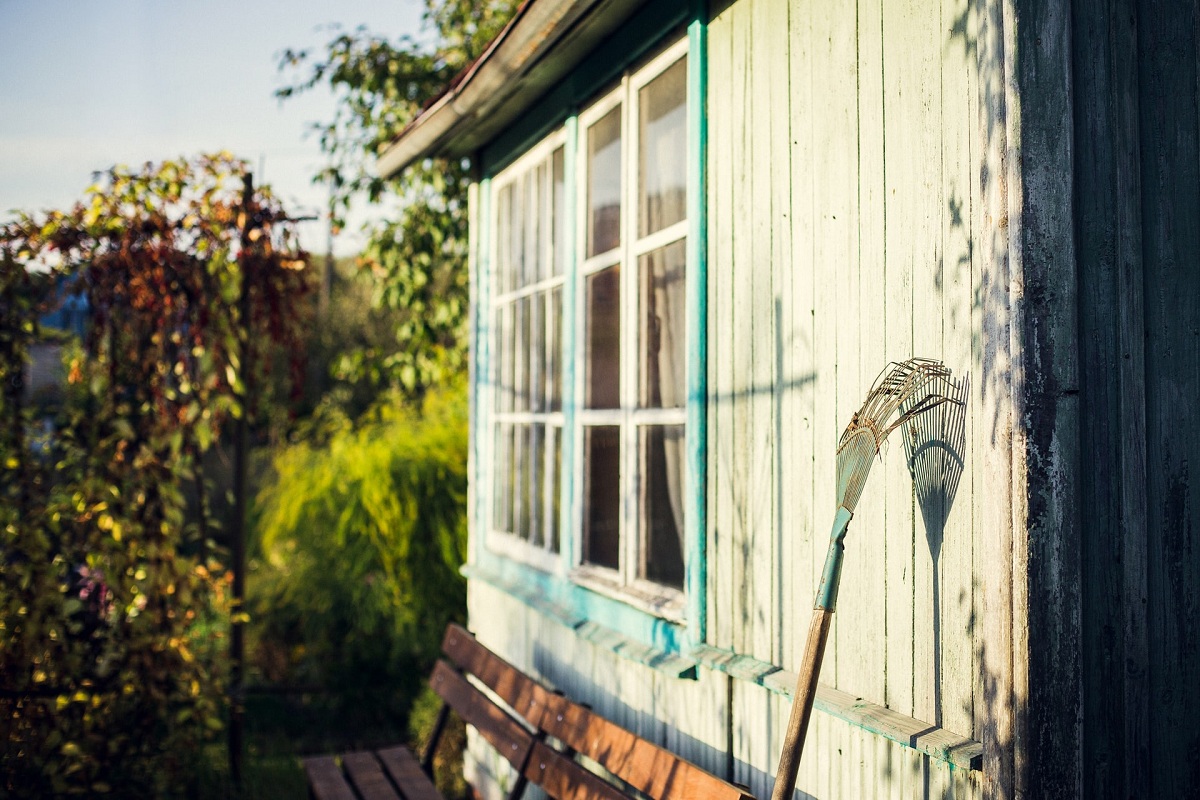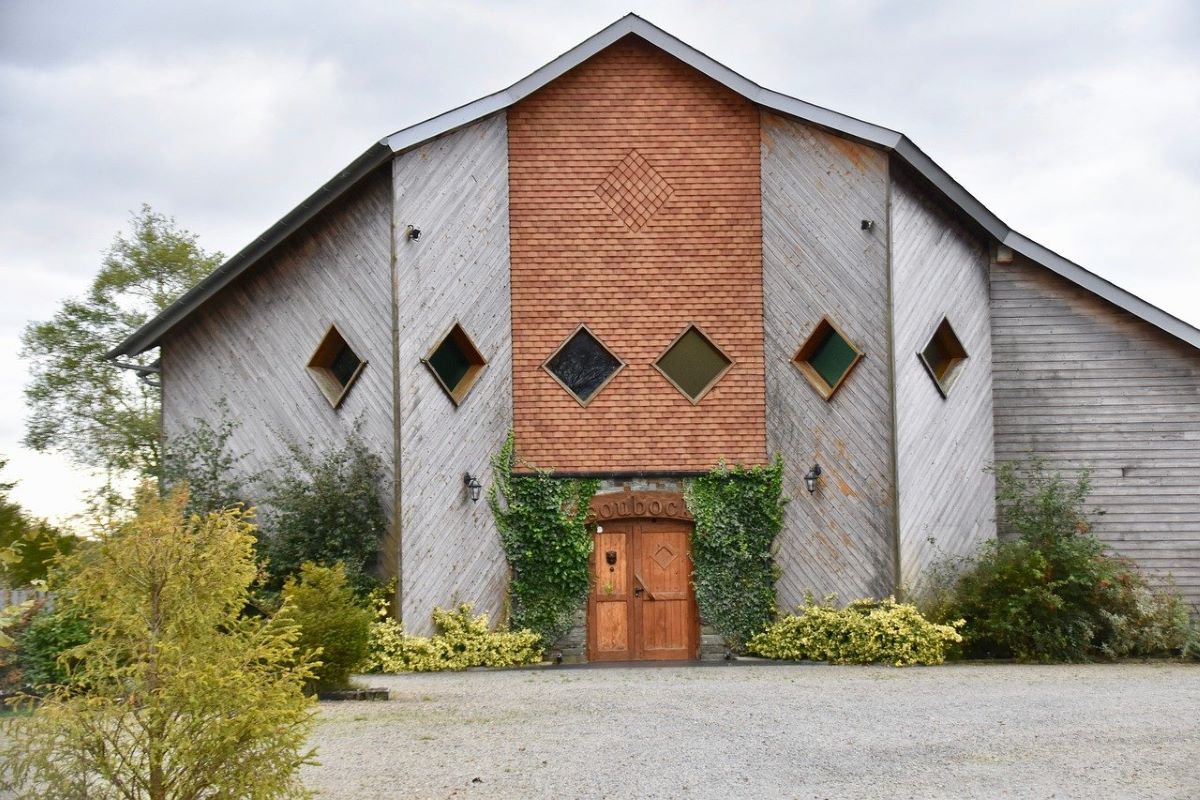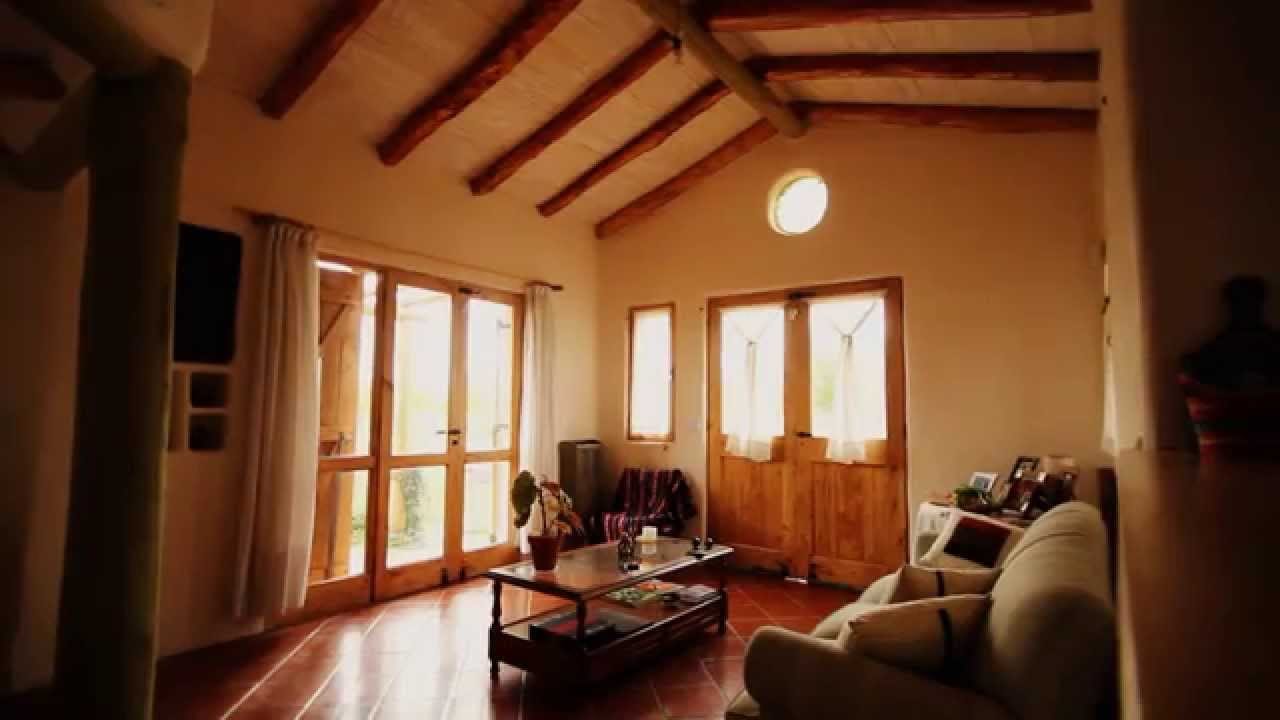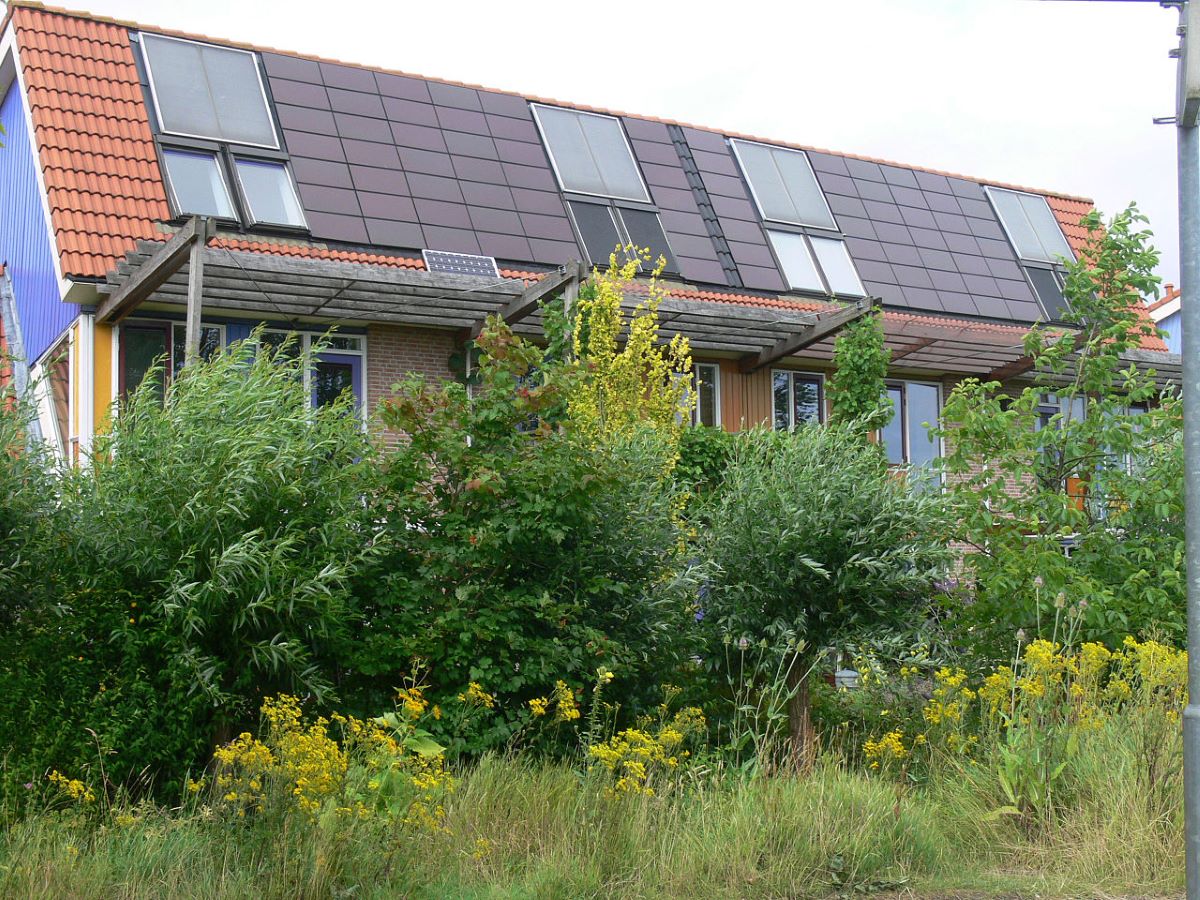
Energy efficiency and renewable energies increasingly encourage homes to be greener and take greater care of the environment. The ecological houses are those whose energy consumption is minimal and it hardly generates any impact on the environment, both in terms of emissions and waste.
But to be able to build an ecological house we must first know which materials are suitable for it and which ones do not generate impacts on the environment, both in their construction and in their use. In addition, there are several types of ecological houses depending on the places where they are built, the material used, the operation that you want to give them, etc. Do you want to know more about ecological houses?
Characteristics of ecological houses
The first thing before knowing the types and differences that exist in ecological houses, we are going to know their characteristics and how they work. An ecological house is a dwelling that takes advantage of the natural resources of the sun and the earth and that also respects the environment both during its construction and once it is finished.
In order to optimize resources to the maximum both in its construction and in its use phase, the design of ecological houses has to be sophisticated and meet certain requirements, such as:
Bioclimatic design
A house that has a bioclimatic design is capable of optimizing the resources offered by the environment to the maximum, such as the hours of sunlight and the heat emitted by the ground to heat the home and, on the other hand, the air currents to ventilate and cool the house.
To isolate the walls from sudden changes in temperature outside, these bioclimatic designs are characterized by having a much greater insulation thickness than conventional ones. In this way, neither the heat nor the external cold are able to penetrate the interior of the house and the interior temperature can be kept more stable, without the need for air conditioning or heating devices.
Already the fact of saving with the insulation offers energy advantages, since we are avoiding greenhouse gas emissions into the atmosphere by the excessive use of electrical energy to heat or cool the home. With this isolation we will be helping to fight against climate change.
Bioclimatic design also has proper orientation to capture as much solar radiation as possible. Especially the south orientation, it is usually the one that perceives the most rays of the sun. In addition, this heat can be stored by materials with thermal inertia, capable of retaining heat during the day and releasing it at night when it is colder.
To generate air currents that ventilate and air in the house can be placed inner courtyards so that the ventilation is crossed in all the rooms of the house.
Respect for the environment
Another characteristic that ecological houses fulfill is that their materials are respectful with the environment. That is, the materials with which they are built are natural, recyclable or recycled and have a small ecological footprint. In addition, we try to use materials that require little energy, both in their production and their transport.
An extra that we add to these materials is that they are not only respectful with the environment, but also with the health and well-being of people. This is because the materials with which ecological houses are built do not contain chemicals or toxic that can affect our health and do not alter the magnetic fields inside the house, helping to achieve a good environment inside.
Hygroscopic materials, for example, regulate humidity in a natural way, so our mucous membranes and our breathing will not be affected by humidity that is too high or too low.
Types of ecological houses
Depending on the materials with which ecological houses are built there are different types. An important thing to keep in mind is that a house requires many different types of materials and it is very difficult for all of them together to meet the characteristics described above.
For example, the houses of wood and brick They can meet the named characteristics depending on whether their construction is respectful with the environment and the people who live in it. However, the concrete houses do not meet the criteria of natural and healthy material, since the concrete itself contains toxic components in its composition that are neither ecological nor healthy. But you can do an analysis of these houses to see how green the house can be.
Ecological wooden houses

Wood is an ecological material par excellence, versatile and that brings a lot of warmth to our home. The main advantage that wood has is that it has hygroscopic capacity and helps to keep the humidity in the house in perfect condition. We have to take into account that if the wood is treated with varnish, the pores will be clogged and it will not be able to exert its hygroscopic function.
Another advantage that wood gives to an ecological house is its good insulating capacity. To insulate the home, both from cold and heat, wood can protect us from outside temperatures. In itself it is a good insulator, but if it is combined with some material that helps to insulate even more, its efficiency will be greater.
The warmth it is an intrinsic characteristic of wood. That is, although the warmth that a wood brings to a house cannot be measured by numbers, it is true that a floor paved with wood is softer and makes our footsteps, the texture of the walls, and gives the feeling of being more comfortable. in return it is a living material.
The general fear of wooden houses is the one with the firesHowever, the regulations on wooden houses are very strict when it comes to placing electricity in the most sensitive points that are most likely to catch fire. Home fires today are often due to careless causes such as unprotected stoves that usually ignite sofas, carpets or curtains first. But these fires can occur in houses of any type.
In any case, when a fire occurs that affects the wooden structure of a home, what burns first is the outer layer of the wood and this is carbonated.
This same layer, already burned, acts as a first protection that prevents the rest of the wood from burning quickly.
Eco-friendly brick houses
The ecological brick houses are the second most built, since it is the most used technique in history, after wood.
Before beginning to describe them, we have to take into account that there are thousands of types of bricks, so each one will have unique characteristics. However, to generalize, we mention that the best brick suitable for the construction of ecological houses are those that are made of unbaked clay, since a large amount of energy is required for firing, which implies a greater impact on the environment. .
The bricks they do not offer the same advantages or benefits as wood, since in most of them it is necessary to use a thermal insulator. In addition, the corners of the house tend to suffer discontinuities in the insulation and therefore do not regulate the temperature of the outside so efficiently.
On the subject of fires, the brick reacts much better, since they do not burn or spread the fire. Brick construction usually requires, in most cases, a greater thickness of the facade and interior walls than with light wood systems. Due to this, the useful surface of our house would be somewhat smaller than in other cases.
For the junction points between bricks, materials must be used that are safe for our health and that have a minimum impact on the environment.
Some types of brick constructions are:
- Calcareous brick walls
- Natural stone wall
- Mud construction
Ecological concrete houses
This is the last type of green house that we are going to see. Concrete is an artificial stone material made from cement, aggregates, water and, in most cases, additives to modify some of its characteristics. This makes the construction is not entirely ecological, since it does not meet the requirements of a sustainable construction without environmental impacts.
Compared to brick and wood, concrete it does not have a good thermal capacity nor is it hygroscopic, so they do not regulate the temperatures and humidity of the interior well. In addition, it has a somewhat larger ecological footprint, since it requires a large amount of energy for its production.
Metal is one of the materials that we must avoid in any of the types of ecological houses, since it is not ecological at all nor does it favor the healthy environment inside the house by altering the natural magnetic field of the environment.
Because concrete is a widely used material throughout the world, makes it a fairly cheap and affordable material for all budgets.

What are the advantages of an ecological house?

Image - Wikimedia / Lamiot
The advantages of an ecological house are based on the improvement of the efficiency and the reduction of the environmental impact and the ecological footprint. Each home is designed in a certain way so it will have many different aspects from each other. However, the main requirements that they must meet to ensure that they all have the same functions are the following:
- Bioclimatic architecture: it is based on the use of sustainable building materials and recycled materials. In this way, a reduction in the use of raw materials and the environmental impact generated by the construction and use of said materials will be achieved.
- Orientation: the house must be oriented to an optimization of energy resources.
- Solar protection: Like the orientation trying to use the use of energy resources, you must also seek protection from the sun's rays.
- Take advantage of the greenhouse effect: It must be taken into account that to reduce the use of electrical energy, the temperature of the home must be used for heating. In this way, a natural greenhouse effect has been used to achieve an optimal temperature.
- Sealing and insulation: sealing and insulation is essential to regulate internal temperature. Thanks to proper insulation and sealing, we can reduce the use of electrical energy for the home. For example, in summer the use of energy for air conditioning can decrease.
- Thermal inertia: is related to the previous one. It is key to look for materials that can have thermal energy. These are materials that can transfer energy better to use less electrical energy.
The main objective of the functions of a green house is to reduce the carbon footprint and optimize natural resources much better.
By way of conclusion, it can be said that the most efficient ecological houses are those that are built with wood. With this information you can know something more about ecological houses and their characteristics.
This motivates me more to continue researching green houses. Thank you, God bless you.